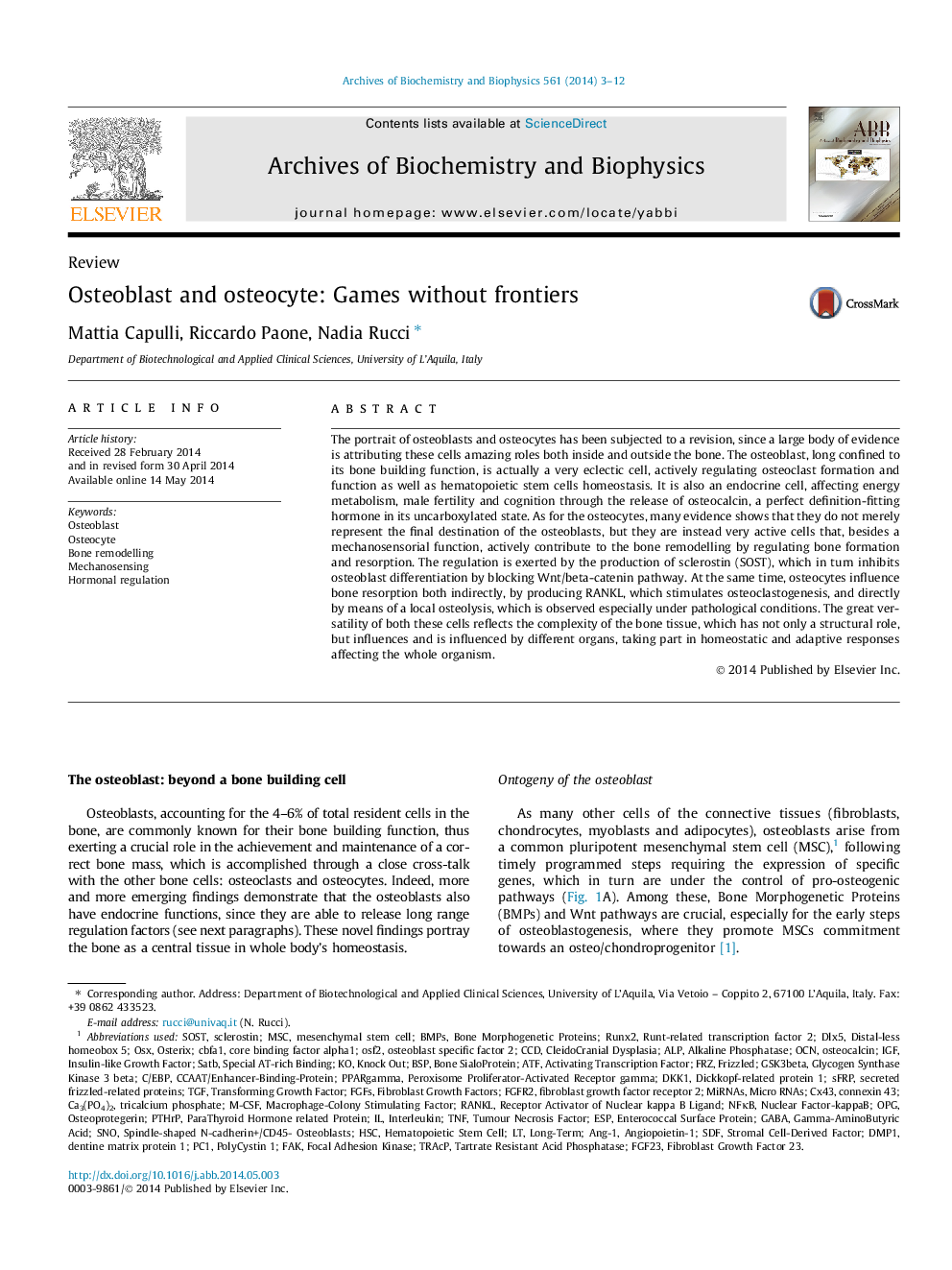| کد مقاله | کد نشریه | سال انتشار | مقاله انگلیسی | نسخه تمام متن |
|---|---|---|---|---|
| 1925098 | 1536341 | 2014 | 10 صفحه PDF | دانلود رایگان |
• Osteoblastogenesis and the classical functions of the osteoblast.
• Osteocytogenesis and the classical functions of the osteocyte.
• New osteoblast functions: hormone secretion and HSC niche maintenance.
• New osteocyte functions: hormone secretion and regulation of mineral homeostasis.
The portrait of osteoblasts and osteocytes has been subjected to a revision, since a large body of evidence is attributing these cells amazing roles both inside and outside the bone. The osteoblast, long confined to its bone building function, is actually a very eclectic cell, actively regulating osteoclast formation and function as well as hematopoietic stem cells homeostasis. It is also an endocrine cell, affecting energy metabolism, male fertility and cognition through the release of osteocalcin, a perfect definition-fitting hormone in its uncarboxylated state. As for the osteocytes, many evidence shows that they do not merely represent the final destination of the osteoblasts, but they are instead very active cells that, besides a mechanosensorial function, actively contribute to the bone remodelling by regulating bone formation and resorption. The regulation is exerted by the production of sclerostin (SOST), which in turn inhibits osteoblast differentiation by blocking Wnt/beta-catenin pathway. At the same time, osteocytes influence bone resorption both indirectly, by producing RANKL, which stimulates osteoclastogenesis, and directly by means of a local osteolysis, which is observed especially under pathological conditions. The great versatility of both these cells reflects the complexity of the bone tissue, which has not only a structural role, but influences and is influenced by different organs, taking part in homeostatic and adaptive responses affecting the whole organism.
Journal: Archives of Biochemistry and Biophysics - Volume 561, 1 November 2014, Pages 3–12
